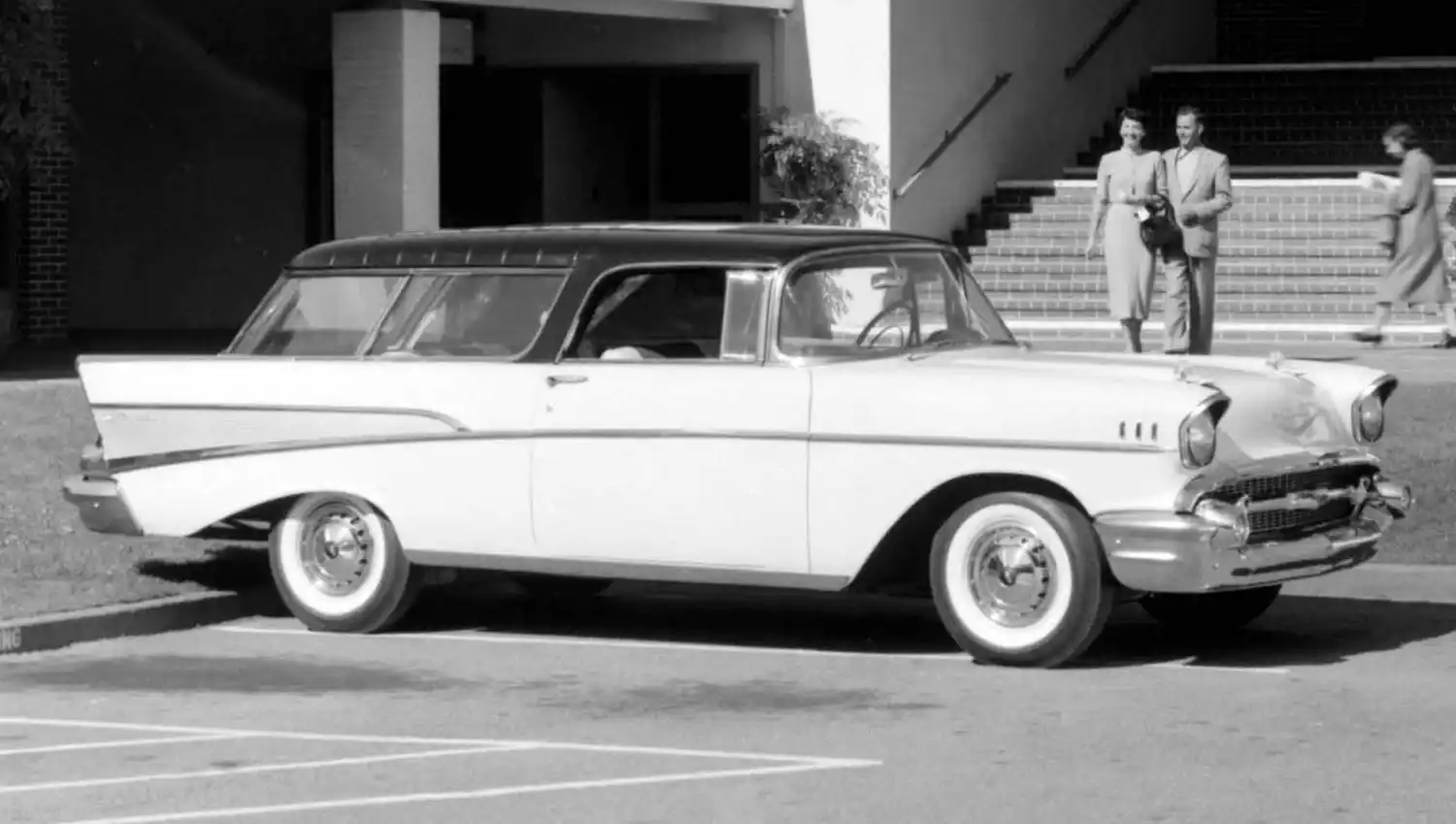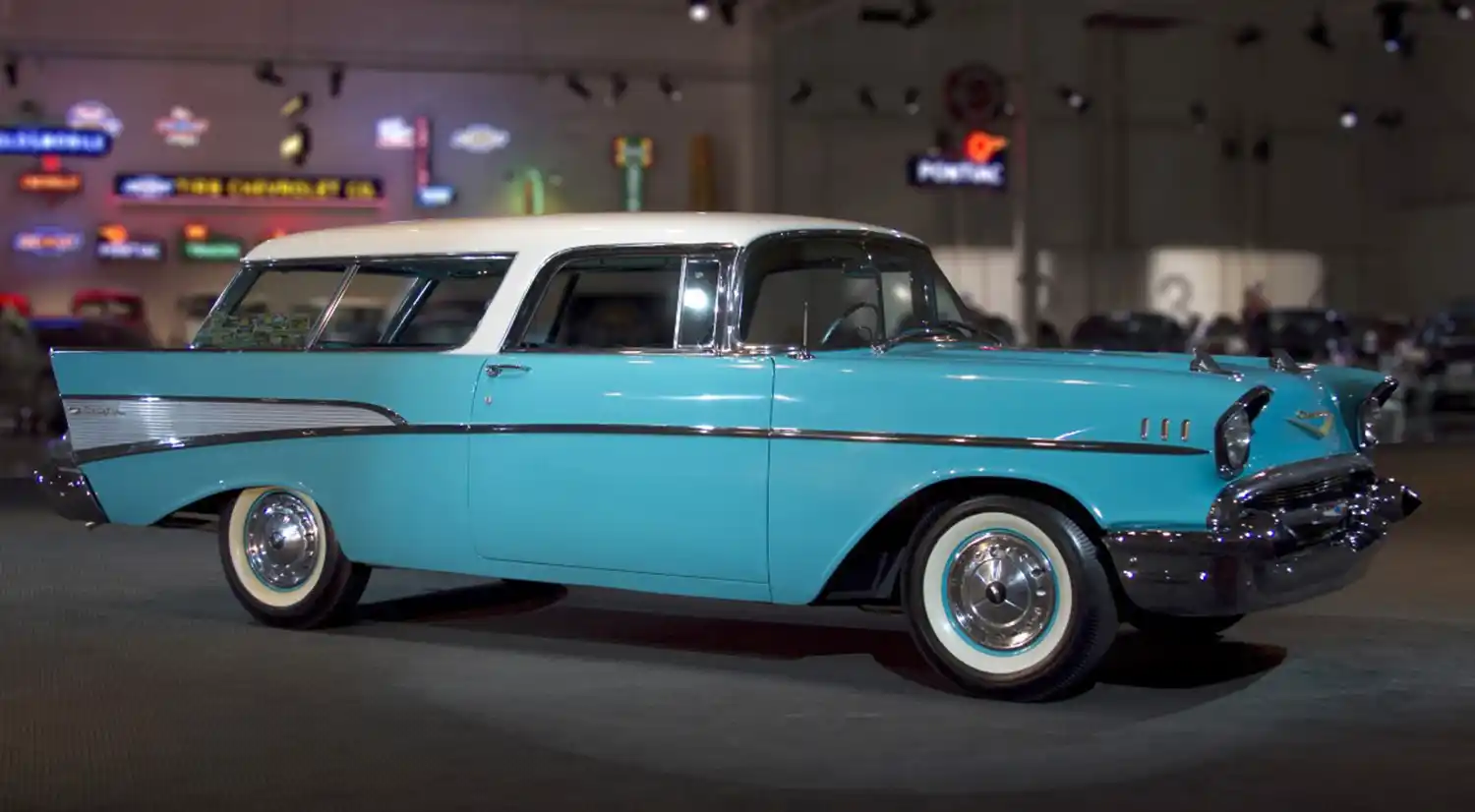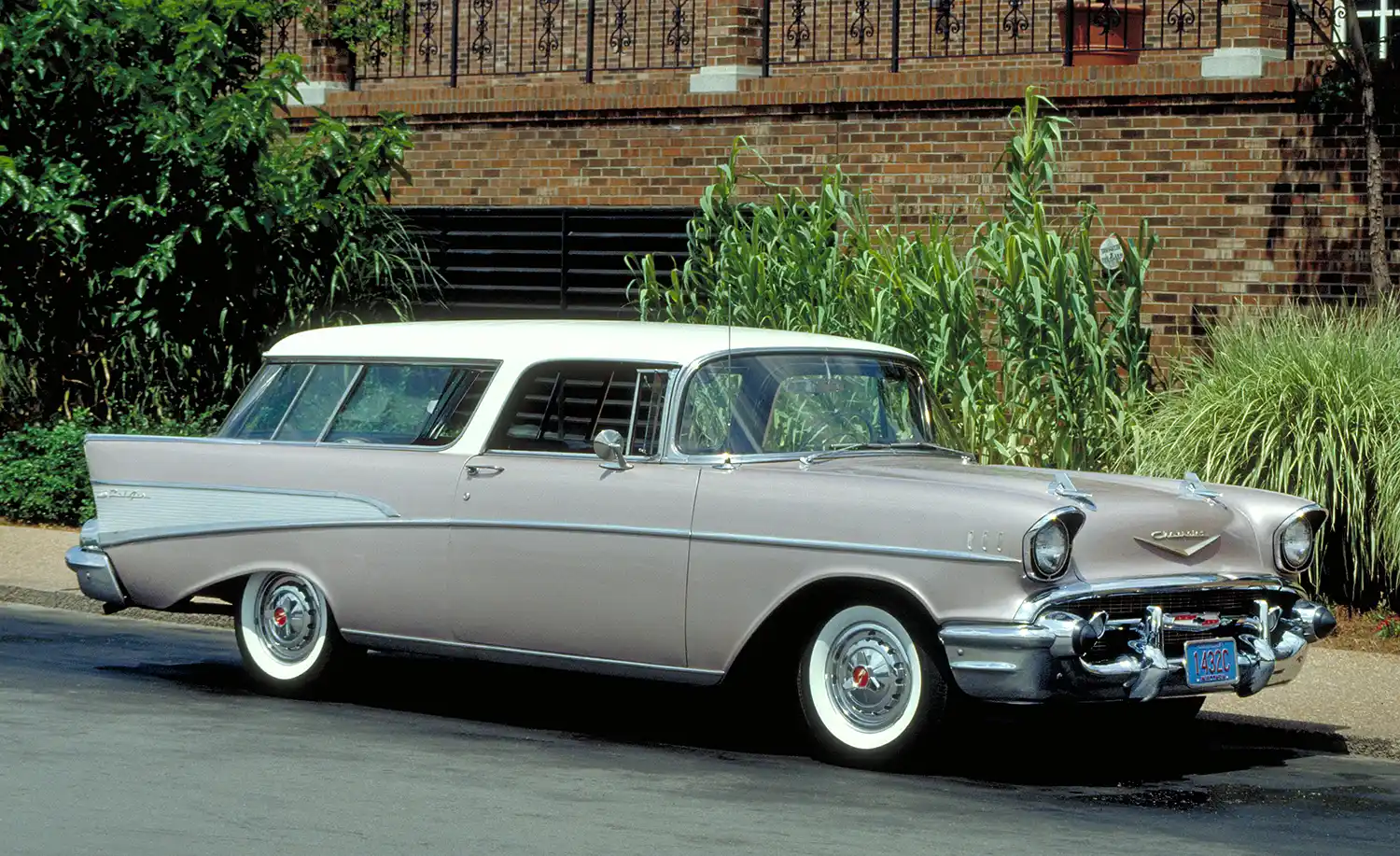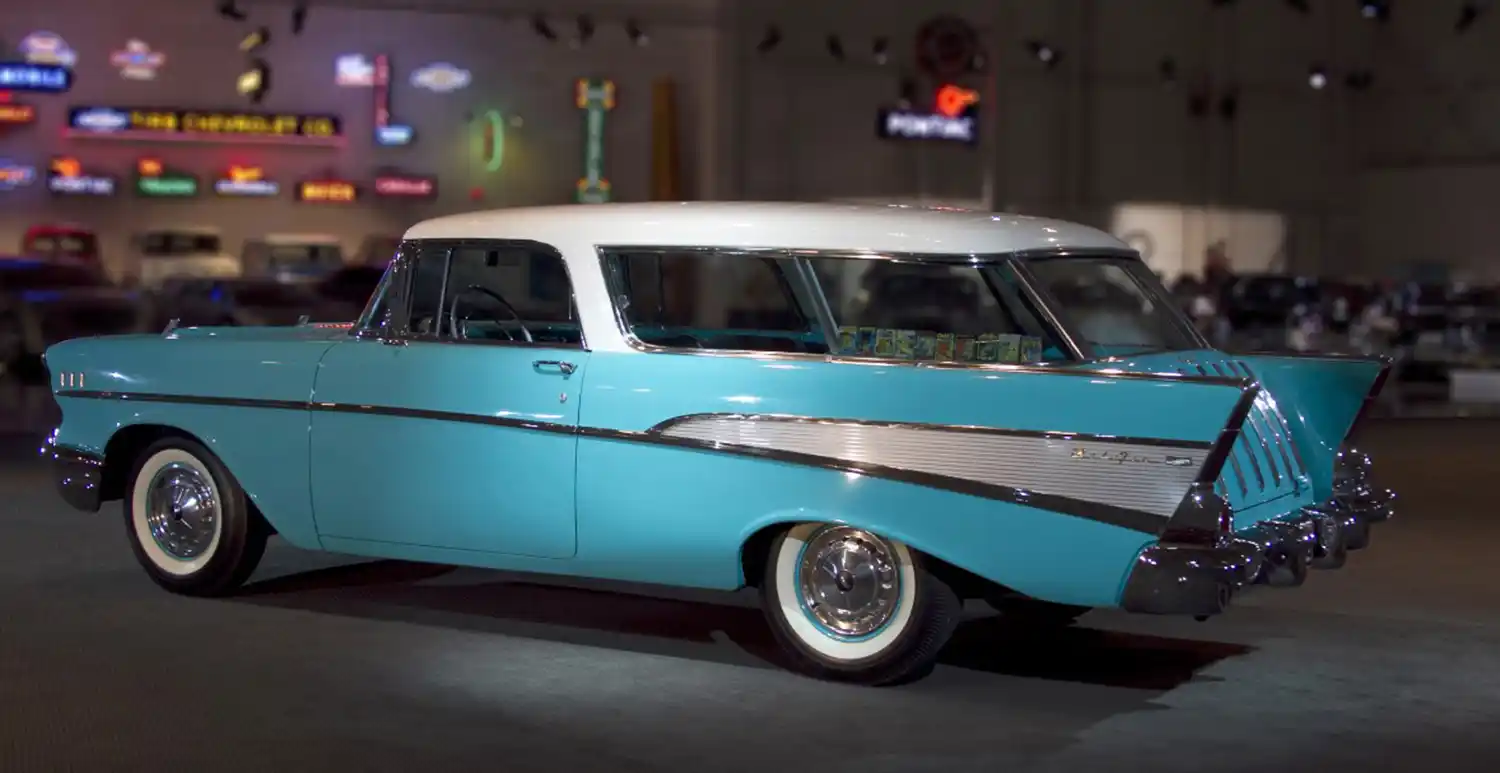
The Chevy Nomad, produced from 1955 to 1957, stands as a testament to mid-century modern design, bringing a stylish flair to the practical station wagon. This distinctive vehicle drew its name, unique roofline, and rear body treatment from a 1954 GM Motorama Corvette concept wagon designed by GM’s legendary design chief, Harley Earl. Earl, who also created the iconic 1953 Corvette roadster, envisioned a station wagon that combined sporty aesthetics with family utility.
Origins and Development
Encouraged by the positive reception of the concept car, Chevrolet moved forward with developing the Nomad into a premium model within their station wagon lineup. As America’s suburbs expanded, the demand for stylish yet functional vehicles grew. Chevrolet positioned the Nomad as a “halo” model within their Bel Air series, intended to attract customers with its superior design and features.

Timeline and Variants
1955 Chevrolet Nomad
- The debut model year of the Nomad introduced a new level of sophistication to the station wagon market.
- Design: The 1955 Nomad featured a sleek two-door sport wagon design with a unique sloping rear roofline, pronounced tailfins, and chrome accents.
- Engine Options: Customers could choose from a variety of engines, including the 265 cubic inch (cid) V8, which was a significant performance improvement over previous Chevrolet engines.
- Features: The Nomad boasted luxury touches like a two-tone paint scheme, full carpeting, and advanced interior materials, distinguishing it from other wagons.
1956 Chevrolet Nomad
- Building on the success of the previous year, the 1956 model retained the distinctive styling but with refinements.
- Design Changes: Minor updates included a new front grille design and revised taillights, enhancing its modern appearance.
- Technical Upgrades: The 1956 Nomad offered improved V8 engine options, including the 225 horsepower version, giving it a competitive edge.
- Popularity: This year solidified the Nomad’s reputation as a stylish and desirable family vehicle, appealing to those looking for both performance and practicality.
1957 Chevrolet Nomad
- The final year of the original two-door Nomad featured the most significant design and performance enhancements.
- Design Evolution: The 1957 Nomad sported a new front-end design with a wider grille and the iconic Chevy “rocket” hood ornaments. The tailfins were also more pronounced, contributing to its striking appearance.
- Performance: Equipped with the 283 cid, overhead valve (ohv) V8 engine, the 1957 Nomad produced an impressive 220 horsepower, showcasing Chevy’s engineering prowess.
- Collectibility: Only 6,103 units were produced in 1957, making it a rare and highly sought-after model among collectors today.
Specifications and Collectibility
- Wheelbase: 115.0 inches (292.10 cm)
- Weight: 3,470 lbs (1,573.97 kg)
- Engine: 283 cid, ohv V8, cast iron block/heads, 220 hp
The tri-five Nomads (1955-1957) remain highly collectible, especially those in factory-original condition. With a total production of just 22,375 units over three years, these vehicles are prized for their design, engineering, and historical significance.

Legacy
Despite its limited production run, the Chevy Nomad left an indelible mark on the automotive world. The nameplate continued beyond 1957 as a four-door model, which sold in higher numbers but lacked the unique charm of the original two-door design. Today, the 1955-1957 Nomads are celebrated as icons of 1950s automotive design and are cherished by enthusiasts and collectors for their timeless appeal and innovative spirit.
The Chevy Nomad of 1955-1957 brought a new level of style and sophistication to the station wagon segment, merging practicality with mid-century modern design. Its legacy endures, not only in the annals of automotive history but also in the hearts of car enthusiasts who continue to admire its unique blend of beauty and functionality.
Source: GM Heritage and Chevrolet
This Article use tools from Chatgpt





